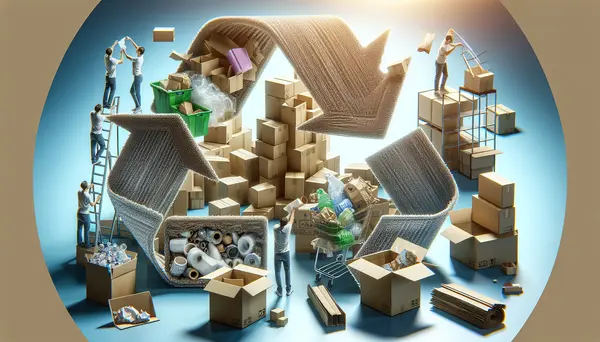Table of Contents:
Understanding the Importance of Minimizing Packaging Waste
In an increasingly consumer-driven society, the growing problem of packaging waste cannot be ignored. The world produces approximately 300 million tonnes of plastic waste every year, a considerable proportion of which comes from product packaging. This staggering number highlights the pressing need to minimize packaging waste and apply more effective strategies in addressing this issue.
Why is minimizing packaging waste so important? When packaging waste is not properly managed, it poses a significant threat to both human health and the environment. Overflowing landfills give rise to serious health risks, while plastic waste leaking into the ocean endangers marine life. In addition, the production of packaging materials is resource-intensive, consuming large quantities of energy and water, and emitting greenhouse gases.
Reducing packaging waste is not only a sustainability best practice but also makes business sense. Consumers today are more environmentally conscious and are likely to support brands that demonstrate respect for the environment. By minimizing packaging waste, businesses can build a better company image, strengthen customer loyalty, and even reduce costs in the long run.
Now that we understand the importance of minimizing packaging waste, let's explore how this can be achieved through effective strategies and initiatives.
The Impact of Packaging Waste on Our Environment
The harmful impact of packaging waste on the environment extends far beyond landfills and marine pollution. Every stage of a packaging material's lifecycle—from extraction and production to disposal—contributes to environmental degradation in different ways.
Firstly, the extraction of raw materials required for packaging, such as petroleum for plastic production, contributes to ecosystem destruction and loss of biodiversity. The extraction process can also lead to soil and water pollution with chemicals and hazardous substances.
Next, the production of packaging materials is energy-intensive and responsible for a significant portion of global greenhouse gas emissions. Many packaging materials, such as plastic and aluminum, require high energy for production, adding to the global burden of fossil fuel consumption.
Finally, disposing of packaging waste, especially if not properly managed, is a major cause of pollution. Whether ending up in landfills, incinerated, or littered in the environment, discarded packaging causes both immediate and long-term damage to the environment. Landfill wastes generate harmful leachate and greenhouse gases, while incinerated waste emits toxic substances into the air. Littered waste, especially plastics, degrades slowly, polluting ecosystems and posing threats to wildlife.
Thus, the imperative of minimizing packaging waste and adopting sustainable packaging solutions is not just about reducing visible litter, but a necessity for protecting our environment on various fronts.
Top 5 FAQ on Minimizing Packaging Waste
What are the effective strategies to minimize packaging waste?
Strategies to minimize packaging waste include reducing packaging materials, reusing materials, recycling, using biodegradable materials and eliminating unnecessary packaging.
How can businesses reduce packaging waste?
Businesses can reduce packaging waste by changing packaging design to use less material, using recyclable materials, and promoting reuse and recycling among consumers.
What is the benefit of minimising packaging waste?
Minimizing packaging waste reduces the ecological footprint, saves resources, cuts down costs and meets customer expectations for sustainable practices.
What role do consumers play in minimizing packaging waste?
Consumers play a crucial role by choosing products with minimal or recyclable packaging, reusing packaging materials, and responsibly disposing of packaging to facilitate recycling.
Are there any regulations for packaging waste?
Yes, many regions have regulations that require businesses to manage and reduce their packaging waste. These laws encourage the replacement of non-recyclable materials with recyclable ones.






